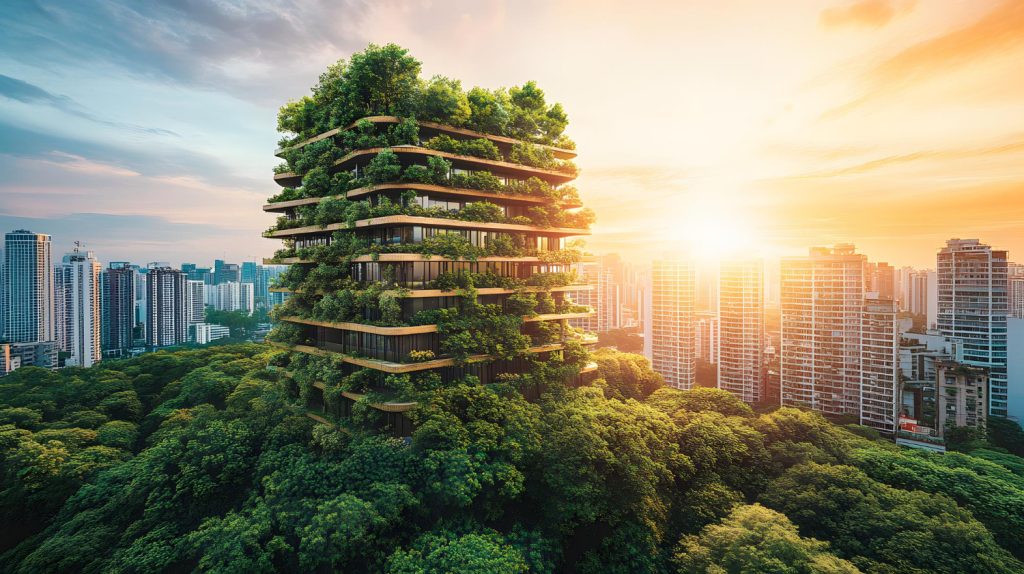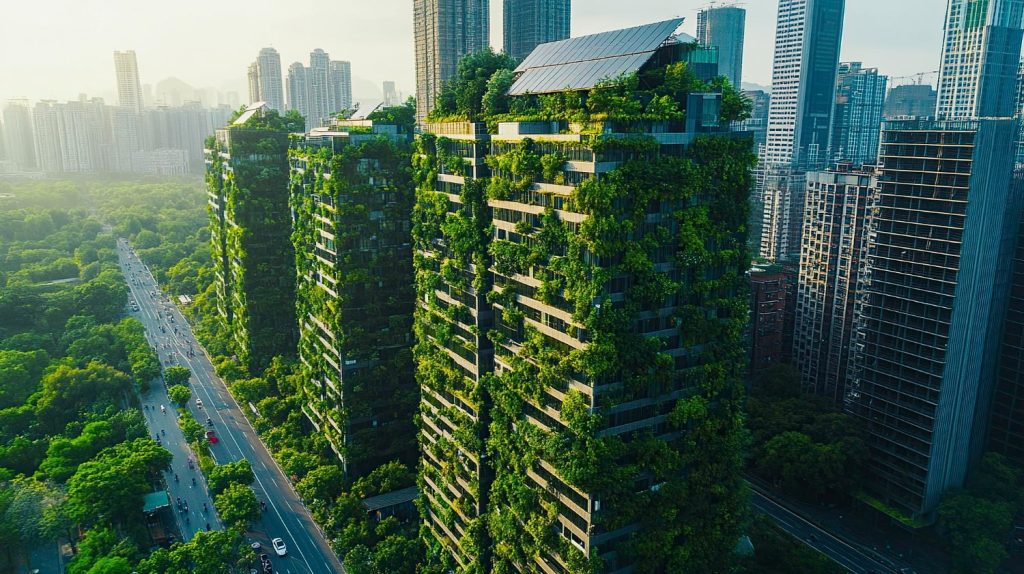You may be familiar with the concept of the green buildings construction industry. It is a globally accepted concept linked with eco-friendly construction. The construction industry, traditionally associated with massive machinery, tall structures, is now undergoing a major change. In fact, green building is a new approach that focuses on eco-friendly construction and sustainable buildings is reshaping the industry’s core. This transition reflects a global movement towards environmentally responsible practices. Green Buildings focus on using local resources to reduce the industry’s environmental footprint. It is due to great efforts of researchers, scientists and environmental engineers that this construction trend is increased in USA, Europe and many other developed countries,
Ecological and Social Benefits from Green Buildings

The adoption of green construction practices delivers long-term benefits to entire localities that extend beyond mere environmental conservation. These include:
- Reduced Environmental Impact: Sustainable buildings use fewer natural resources, produce less waste, and create less pollution, helping to fight climate change.
- Improved Occupant Health: These buildings provide cleaner air, more natural light, and use materials that limit harmful emissions, creating healthier living spaces.
- Lower Operating Costs: Energy-efficient designs lead to lower utility bills over time, despite higher initial costs.
- Higher Property Value: Eco-friendly buildings are more attractive to renters and buyers, increasing rental income and property value.
- Conservation of Resources: Green construction focuses on using recycled materials and conserving natural resources, including efficient water use, especially in irrigation systems.
Challenges of Green Building and Sustainable Construction

There are also some challenges to green building.
- Higher costs: Green building can sometimes be more expensive than traditional construction. This is because green building materials and practices can be more expensive upfront. However, the long-term cost savings from energy and water efficiency can often offset the higher upfront costs.
- Lack of awareness: Many people are not aware of the benefits of green building. This can make it difficult to convince people to invest in green building practices.
- Lack of skilled labor: The construction industry needs more skilled workers who are trained in green building practices.
The Future of Green Building

Despite these challenges, the future of green building is bright. As more and more people become interested in sustainable construction practices, green building is likely to become more mainstream. There are a number of factors that are driving the growth of green building, including:
- Government incentives: Many governments are now offering incentives for green building, such as tax breaks and grants.
- Corporate sustainability initiatives: Many companies are now setting sustainability goals that include green building practices.
- Increased consumer demand: Consumers are increasingly demanding green products and services, including green buildings.
Few Examples of Green Buildings in World
Let us enlist some of the famous examples of green buildings worldwide.
- The Bullitt Center, Seattle, USA
- Shanghai Tower, Shanghai, China
- Olympic House, Lausanne, Switzerland
- The Crystal, London, UK
- One Central Park, Sydney, Australia
Frequently Asked Questions (FAQ’s) on Green Buildings
- What distinguishes a “green” building?
A green building is one that minimizes its environmental footprint by utilizing sustainable materials, improving energy efficiency, and adopting practices that reduce its overall impact on both the planet and its inhabitants.
- Are green buildings more expensive to build?
Initially, they can be costlier due to the price of eco-friendly materials and advanced systems. However, over time, lower operating costs often offset the higher initial outlay.
- How do sustainable buildings affect occupant health?
Sustainable designs prioritize indoor air quality, natural lighting, and materials with fewer toxins, which all contribute to healthier living and working environments.
- Can older buildings be retrofitted to be eco-friendly?
Yes, retrofitting older buildings with modern energy-efficient systems, better insulation, and sustainable materials is becoming increasingly common.
- Are there certifications for sustainable buildings?
Certifications such as LEED (Leadership in Energy and Environmental Design) and BREEAM (Building Research Establishment Environmental Assessment Method) provide frameworks for eco-conscious construction.
- What does the future hold for green construction?
The future of eco-friendly construction is promising, with innovations in technology, stricter regulations, and increased consumer demand steering the industry toward sustainable practices.
If you are interested to know about other new technologies and advancements in construction industry.
Read:- 3D Printing Technology, Best Examples and Use in its Construction Industry
Read:- Technology of Augmented Reality and Its Use in the Construction Industry 2024
Final Words
As green building becomes more affordable, accessible and beneficial to humanity, we can expect to see more and more green buildings being constructed in the years to come. This will have a positive impact on the environment, the economy, and the health of building occupants. We hope this blog post has given you a better understanding of green building. If you are interested in learning more about green building, there are many resources available online from where you can learn and clear your concepts. You can also contact a green building professional for more information.

